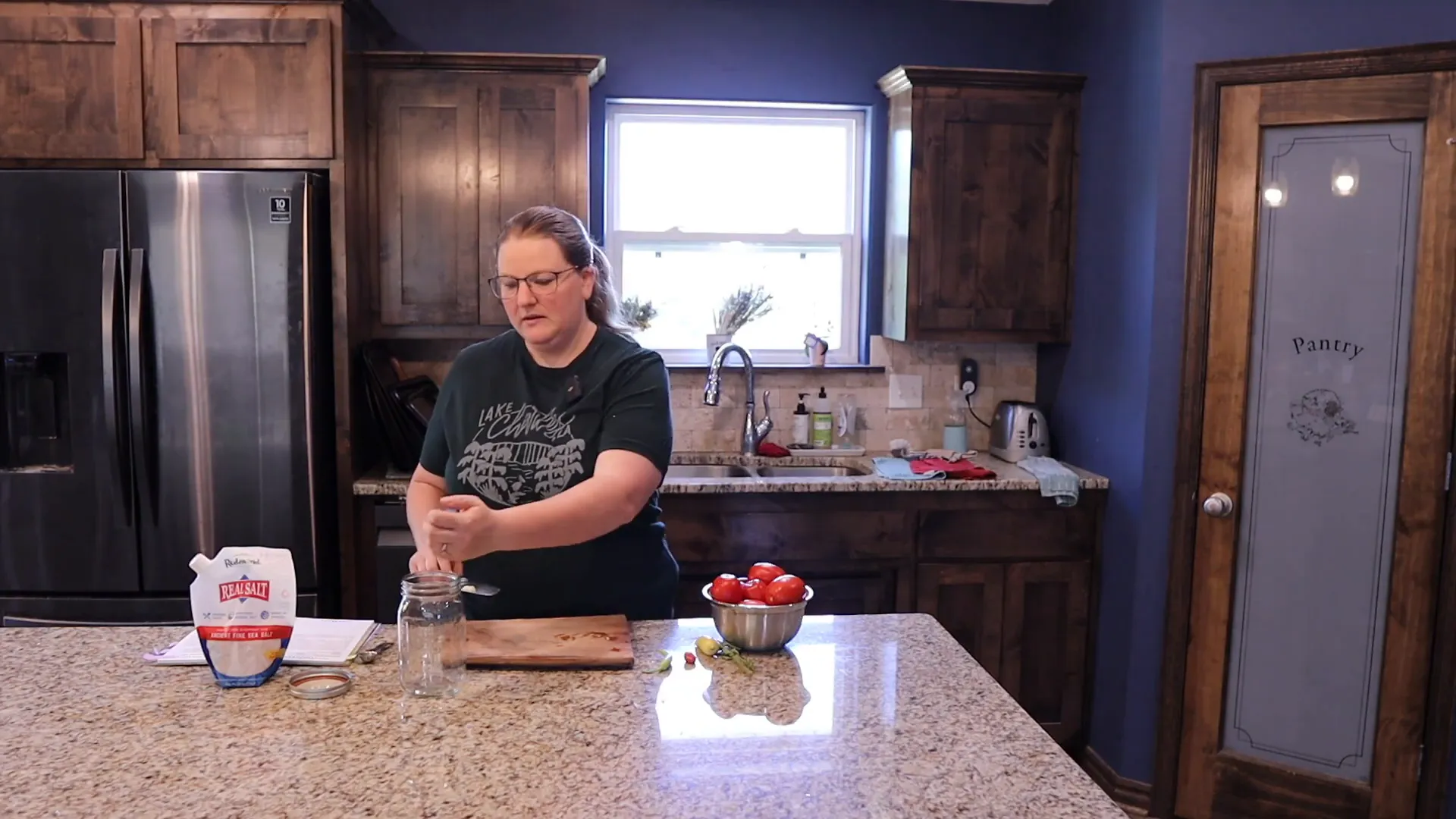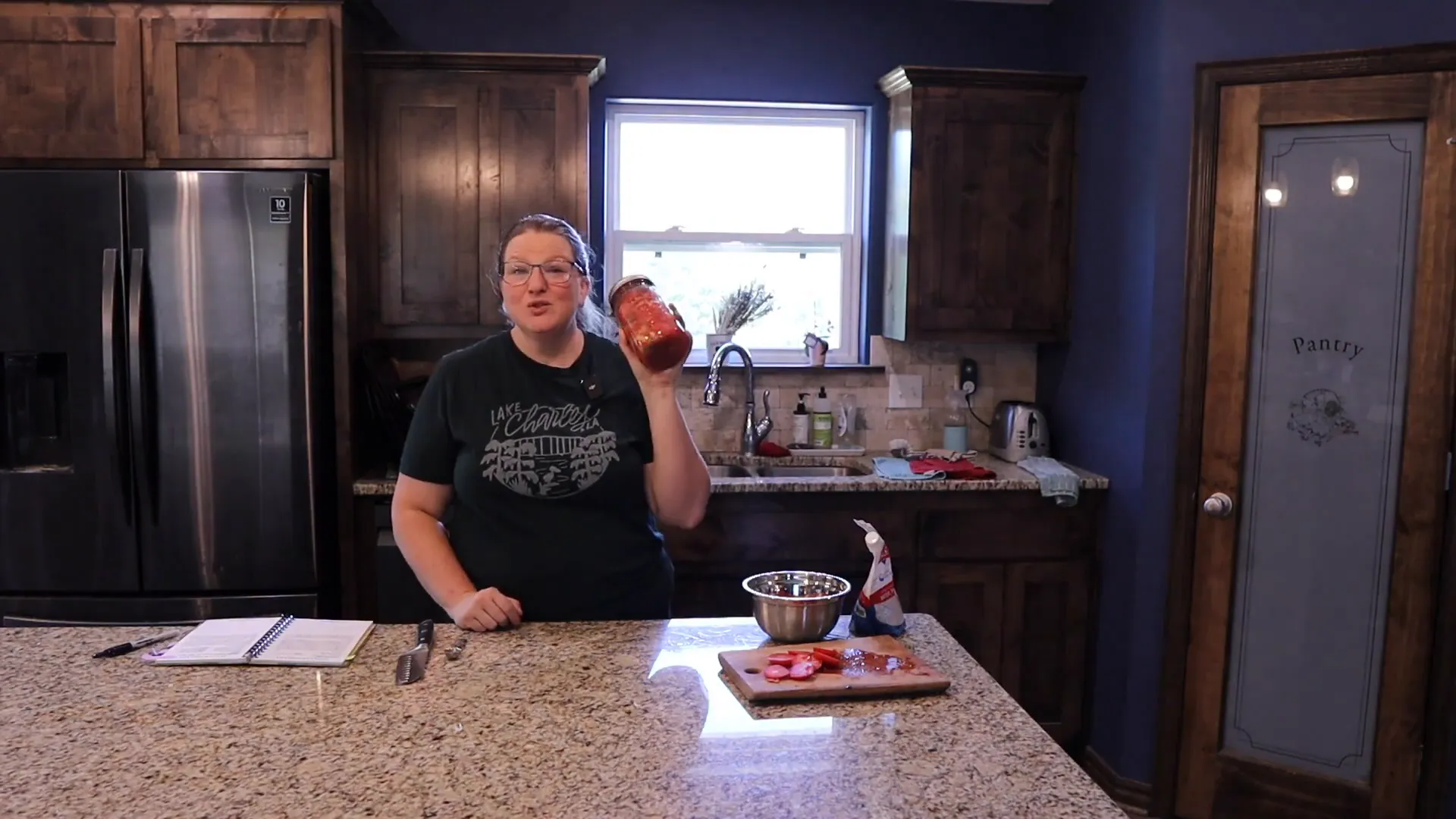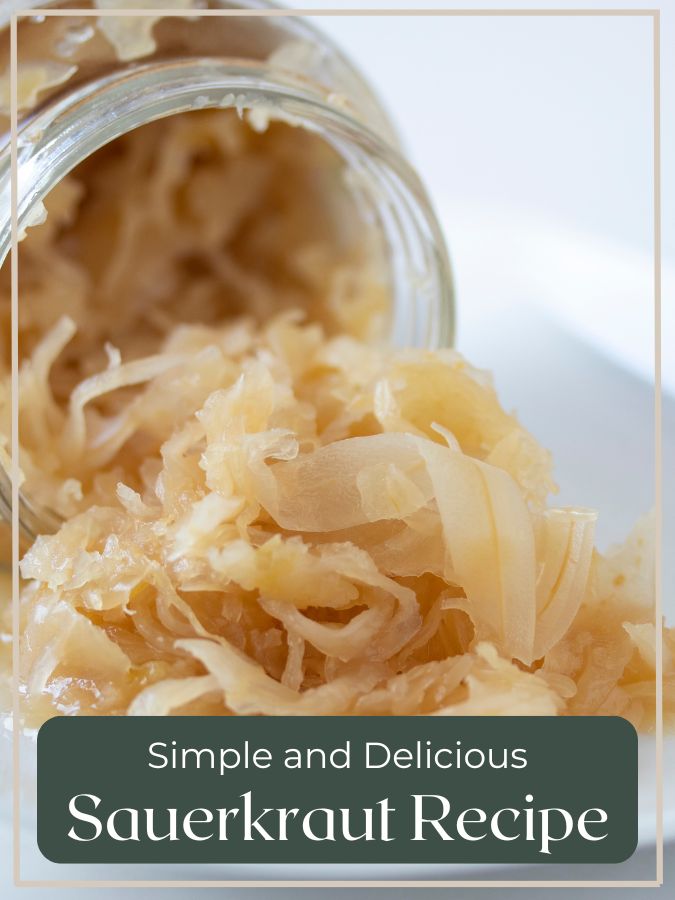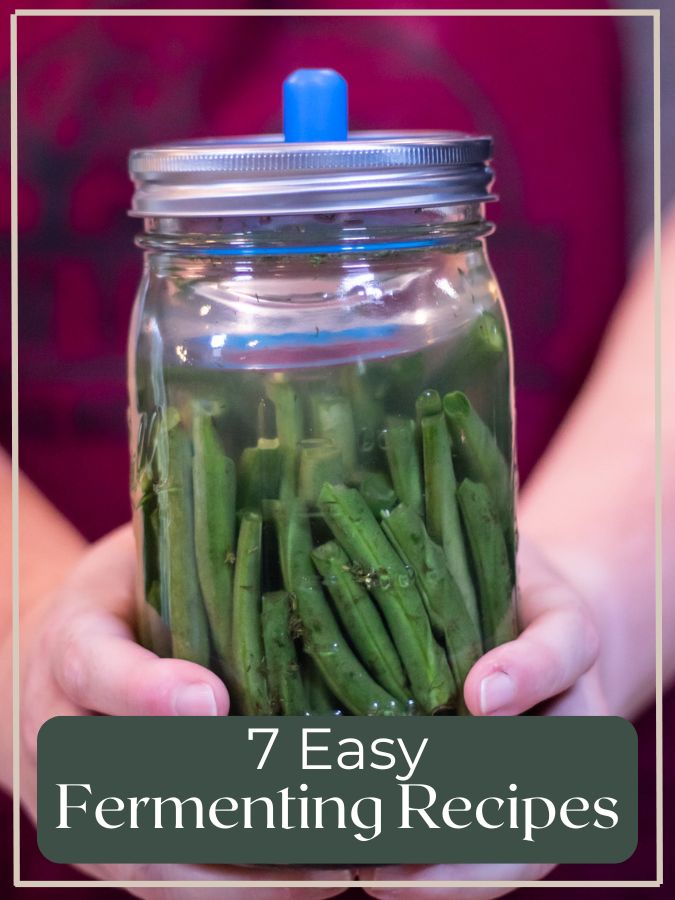Quick and Easy 5-Minute Fermented Tomato Sauce Recipe
Welcome to a delightful exploration of making easy fermented tomato sauce! This tomato sauce recipe recipe is perfect for those who want to preserve their summer harvest while enhancing their meals with the benefits of fermentation. If you are new to fermenting, this is the perfect recipe to start with; it’s a great way to get more whole foods into your diet without taking up much time. Let’s dive into the details of this simple yet delicious method!
Benefits of Fermented Foods
Thanks to their rich probiotic content and enhanced nutritional profile, fermented foods are stellar health foods. During fermentation, beneficial bacteria and yeast break down sugars and other compounds, producing beneficial probiotics that promote a healthy gut microbiome. A well-balanced gut microbiome is crucial for digestion, nutrient absorption, and overall immune system support. Foods like yogurt, kefir, sauerkraut, kimchi, and miso are teeming with these probiotics, which can help improve digestion, reduce inflammation, and alleviate conditions like irritable bowel syndrome (IBS). Additionally, the fermentation process often increases the bioavailability of vitamins and minerals, making nutrients like B vitamins, vitamin K, and certain antioxidants more accessible to the body.
Beyond gut health, fermented vegetables may also contribute to mental well-being. Emerging research has linked the gut-brain axis to mood regulation, suggesting that a healthy gut can positively influence mental health. Fermented foods, by supporting gut health, may play a role in reducing symptoms of anxiety, depression, and stress. Moreover, the natural preservation process in fermentation often reduces the need for artificial additives or preservatives, making these foods a more wholesome choice. Including fermented foods in your diet not only enriches it with unique flavors and textures but also supports overall well-being by fostering a healthy, balanced internal environment.
Benefits of Fermented Tomato Sauce
Homemade fermented tomato sauce is a flavorful and nutritious way to enhance your meals while supporting gut health. The fermentation process not only enriches the sauce with probiotics but also deepens its flavor, creating a tangy and slightly effervescent profile. By fermenting fresh tomatoes with garlic, herbs, and a touch of salt, you preserve the natural goodness of the ingredients without the need for artificial additives. This sauce can be used as a base for pasta, pizza, or soups, adding a probiotic boost to your favorite dishes. Additionally, fermenting tomatoes increases the bioavailability of nutrients like lycopene, an antioxidant known for its heart and skin health benefits. Easy to make and versatile, homemade fermented tomato sauce is a delicious way to combine culinary creativity with healthful eating.
This particular recipe is a sneaky way to introduce ferments into kids’ diets, as it tastes just like tomato sauce with a subtle zing for your taste buds. It is the best way to use those surplus tomatoes from the garden. Each batch of tomato sauce is delicious, and the best part is that it is a powerhouse of health for your whole family.
Fermented Tomato Sauce Ingredients
To make this easy fermented tomato sauce, gather the following ingredients:
- 2 pounds of fresh tomatoes
- 2 cloves of garlic
- A handful of fresh basil (fresh herbs are best bu you can use store-bought if necessary)
- 1 sweet pepper (or a few small ones)
- 4 teaspoons of non-iodized pure salt or sea salt
- mason jars
Preparation Steps
Before starting, ensure that your glass jars and utensils are clean and sterilized. While canning often allows for simple washing, fermentation requires everything to be pre-sterilized since it won’t go through a heating process. This prevents bad bacteria from growing in your ferment. In addition to this, be sure to always wash your hands well before preparing a ferment.

Step-by-Step Instructions for Fermented Tomato Sauce
- Start by crushing the two cloves of garlic with the flat blade of a knife to release their medicinal properties. Place the crushed garlic into the bottom of your sterilized jar.
- Add fresh basil leaves on top of the garlic. Fresh basil enhances the flavor, but dried basil can work in a pinch.
- Chop your sweet peppers and add them to the jar. You can also use hot peppers if you prefer a spicier sauce.
- Quarter your whole tomatoes and pack them into the jar, leaving about an inch of headspace. Headspace is essential for fermentation, allowing gases to escape.
- Sprinkle four teaspoons of salt on top of the tomatoes.
- Seal the jar with a regular lid and begin shaking it. Shake until the juices from the tomatoes start to release and mix with the other ingredients.
- Once mixed, label the jar with the date and contents. This is especially useful if you are fermenting several things at once, I find that I never remember what I started when.
- Store the jar in a dark, room-temperature place for 3-4 days, shaking it and opening the lid daily to mix the contents and release any built-up gas.
Using Your Fermented Tomato Sauce
After 3-4 days, your fermented tomato sauce is ready to use!

Here are some specific ways to use homemade fermented tomato sauce:
- Pasta Sauce: Heat the fermented tomato sauce gently in a pan with olive oil, sautéed onions, and your favorite herbs like basil, oregano, or even red pepper flakes. Toss it with cooked pasta for a flavorful dish. Avoid boiling the sauce to preserve the probiotics as much as possible.
- Pizza Topping: Spread the sauce directly onto a pizza crust as a tangy, probiotic-rich base. Top with cheese, vegetables, or meats of your choice, then bake as usual.
- Soup Starter: Use the fermented sauce as a base for tomato soup. Combine it with vegetable or chicken broth, add some cream or coconut milk for richness, and warm gently.
- Dip or Condiment: Serve the sauce cold as a dip for breadsticks or as a condiment for sandwiches and wraps. Its bright, tangy flavor adds a unique twist.
- Casserole Layering: Use the sauce in baked dishes like lasagna or eggplant Parmesan. Layer it with cooked vegetables, cheese, and pasta sheets for a wholesome, probiotic-enhanced meal.
- Marinade: Mix the sauce with olive oil, garlic, and spices to create a marinade for chicken, fish, or tofu. Let it sit for a few hours to infuse flavor before cooking.
These uses showcase the sauce’s versatility while retaining its health benefits. For probiotic preservation, aim to add it near the end of cooking or use it at room temperature when possible. This genius recipe is so easy anyone can make it, even if it is your first time fermenting.
Storing Your Fermented Tomato Sauce
This quick ferment is a great way to preserve your tomatoes without the labor-intensive process of traditional canning. It’s perfect for those busy days when you want a flavorful sauce without the hassle. Proper storage of your fermented tomato sauce is essential to maintain its flavor, freshness, and probiotic benefits. Once the fermentation process is complete, transfer the sauce to airtight glass jars or containers with tight-fitting lids. Store it in the refrigerator to slow down further fermentation and prevent spoilage, as the cool temperature helps preserve the probiotics and flavor. Fermented tomato sauce can last several months when refrigerated, but it’s best to use it within a few weeks for optimal taste and nutritional benefits. Be sure to check for any signs of spoilage, such as an off smell, mold, or unusual discoloration. Always use a clean spoon to scoop out the sauce to avoid introducing contaminants. By storing it properly, you’ll have a tangy, probiotic-rich sauce ready to enhance your meals anytime!
Conclusion
Incorporating fermented tomato sauce into your kitchen routine is a delicious and nutritious way to elevate your meals while supporting gut health. Packed with probiotics, enhanced nutrients, and rich, tangy flavors, it offers a versatile addition to various dishes, from pasta to pizza and beyond. By learning to make, store, and use this wholesome condiment, you can enjoy its health benefits and unique taste year-round. Whether you’re embracing fermentation for its culinary creativity or its wellness perks, fermented tomato sauce is a simple yet impactful step toward a healthier, more flavorful lifestyle.
This post may contain affiliate links.
5-Minute Fermented Tomato Sauce
This recipe is perfect for those who want to preserve their summer harvest while enhancing their meals with the benefits of fermentation. Let’s dive into the details of this simple yet delicious method!
- Prep Time: 5 minutes
- Total Time: 5 minutes
- Yield: 1 Quart 1x
- Method: Fermentation
Ingredients
- 2 pounds of fresh tomatoes
- 2 cloves of garlic
- A handful of fresh basil
- 1 sweet pepper
- 4 teaspoons of non-iodized salt
Instructions
- Start by crushing the two cloves of garlic with the flat blade of a knife to release their medicinal properties. Place the crushed garlic into the bottom of your sterilized jar.
- Add fresh basil leaves on top of the garlic. Fresh basil enhances the flavor, but dried basil can work in a pinch.
- Chop your sweet peppers and add them to the jar. You can also use hot peppers if you prefer a spicier sauce.
- Quarter your tomatoes and pack them into the jar, leaving about an inch of headspace.
- Sprinkle four teaspoons of salt on top of the tomatoes.
- Seal the jar with a regular lid and begin shaking it. Shake until the juices from the tomatoes start to release and mix with the other ingredients.
- Once mixed, label the jar with the date and contents.
- Store the jar in a dark, room-temperature place for 3-4 days, shaking it and opening the lid daily to mix the contents and release any built-up gas.
- After 3-4 days, your fermented tomato sauce is ready to use! It can be used cold, drizzled over warm noodles, or added to salads without losing its beneficial enzymes. While you can heat it, avoid high temperatures to retain its health benefits.
Notes
Here are some specific ways to use homemade fermented tomato sauce:
- Pasta Sauce: Heat the fermented tomato sauce gently in a pan with olive oil, sautéed onions, and your favorite herbs like basil, oregano, or even red pepper flakes. Toss it with cooked pasta for a flavorful dish. Avoid boiling the sauce to preserve the probiotics as much as possible.
- Pizza Topping: Spread the sauce directly onto a pizza crust as a tangy, probiotic-rich base. Top with cheese, vegetables, or meats of your choice, then bake as usual.
- Soup Starter: Use the fermented sauce as a base for tomato soup. Combine it with vegetable or chicken broth, add some cream or coconut milk for richness, and warm gently.
- Dip or Condiment: Serve the sauce cold as a dip for breadsticks or as a condiment for sandwiches and wraps. Its bright, tangy flavor adds a unique twist.
- Casserole Layering: Use the sauce in baked dishes like lasagna or eggplant Parmesan. Layer it with cooked vegetables, cheese, and pasta sheets for a wholesome, probiotic-enhanced meal.
- Marinade: Mix the sauce with olive oil, garlic, and spices to create a marinade for chicken, fish, or tofu. Let it sit for a few hours to infuse flavor before cooking.





One Comment